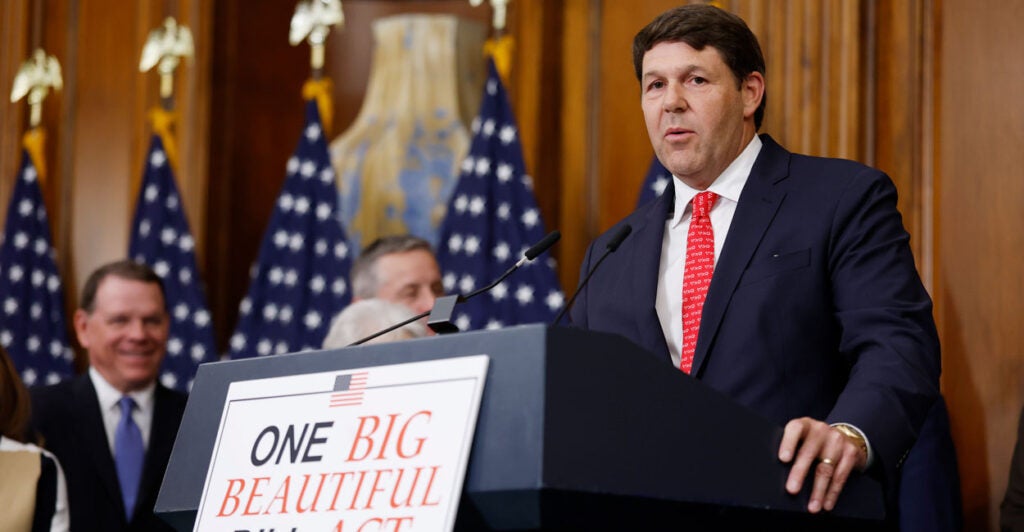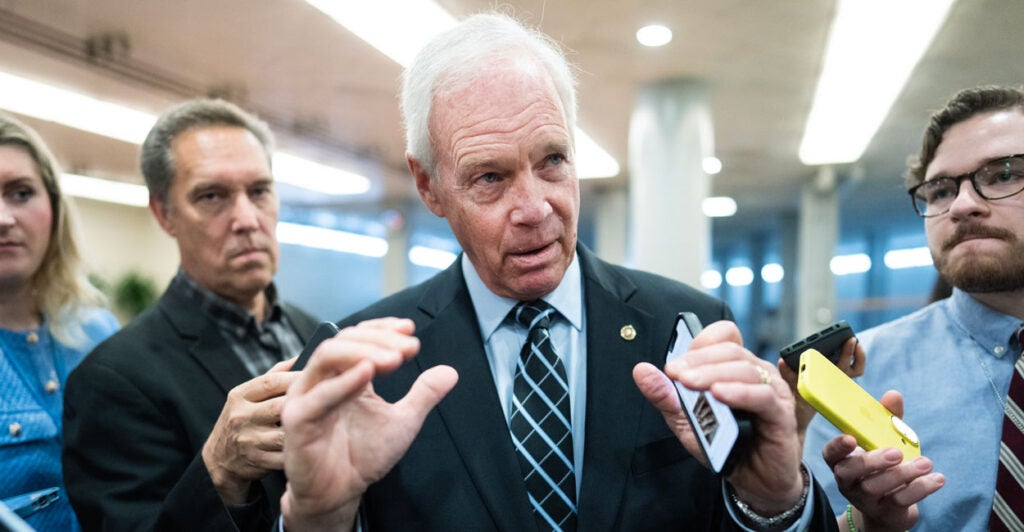As Speaker of the House Mike Johnson teases subsequent budget reconciliation bills to follow up on the recently enacted “big, beautiful bill,” Republicans in Congress are already filling out their wish lists for reforms they want included in it.
Johnson, R-La., laid out his plan in an interview Sunday, two days after the One Big, Beautiful Bill was signed into law by President Donald Trump on the 4th of July.
“We’ve been planning a second reconciliation bill for the fall that would be attached to the next fiscal year, and then potentially one in the spring. That’s my plan—three reconciliation bills before this Congress is over,” he said, adding:
You’ll see more of us advancing these common-sense principles to deliver that “America First” agenda for the American people.
Under the Congressional Budget Act of 1974, which created the budget reconciliation process, Congress is generally allowed one reconciliation bill per fiscal year for each budget resolution, which is essentially a nonbinding rough draft for the legislation.
The appeal of a budget reconciliation bill is obvious: It allows for massive policy changes while avoiding the requirement of 60 votes to end debate in the Senate.
But passing a second “Big, Beautiful Bill” might be just as hard as passing the first one.
For one thing, the GOP has succeeded in its main mission of delivering on tax cuts and border security. Without those incentives, it might be difficult to create the same sense of urgency for members to get on board.
House Budget Committee Chairman Rep. Jodey Arrington, R-Texas, told reporters on a call this week that he wants subsequent bills to focus on increased savings.
“I think there are still reforms that we could include that would save money, that are efficiency-related, waste- and fraud-related,” he said.
He added, however, “I don’t have a lot of hope that it will be a significant amount of savings, just because I think we maxed out a big chunk of that in this process.”

Arrington also said that a second bill could be another chance to craft provisions that could pass muster with the Senate parliamentarian—the chamber’s rules keeper, who struck a number of benefits reforms using the “Byrd Rule,” which prohibits provisions that are more policy-oriented than budgetary.
“I think those—we need to spend more time” crafting the provisions to pass muster with the parliamentarian, Arrington said, adding:
I don’t think we spent enough time to look for a pathway to success on them, and that’s sort of the landscape, as I see it, of the opportunities in another reconciliation bill.
Sen. Rand Paul, R-Ky., who voted against the “big, beautiful bill” because of its $5 trillion debt-ceiling increase, also said he was unsure how many cuts could be put into a subsequent bill.
“I’d like to see Congress grow a spine. I’m not so sure that’s going to happen,” he said. “What will change things between the last bill and the next bill?”
Sen. Ron Johnson, R-Wis., however, expressed hope this week that he could see further reconciliation bills make deeper spending cuts.

He told reporters that promises of a second bill were part of what won him over after weeks of expressing concerns about the initial bill’s ability to address an ever-growing national debt.
“Another reason why I definitely had to vote ‘yes,’ I would have just dealt myself out of being involved in that process. And I wanted to be highly involved in that process,” he said.
“I gained a fair amount of confidence from the White House, the president, our leadership, that we will have a second bite of the apple.”










